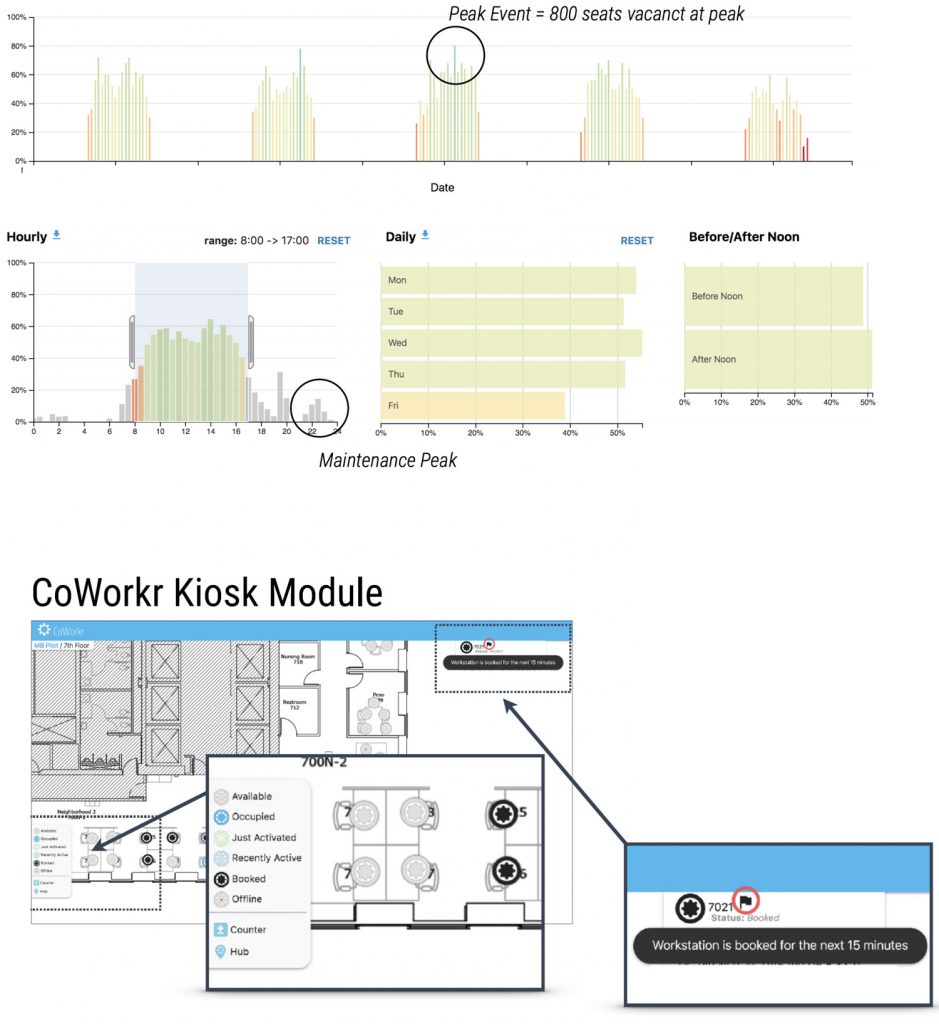Case Study April 30, 2020
4000+ Seats Tech Company in Singapore Increased its Density by 20%

Meeting The Client
A cutting edge Technology Co, with 4000+ seats, located in APAC HQ, Singapore was keen on learning how to increase density in such a prestigious business location.
Their first move had been to adopt an ABW, or activity-based workplace model, where workstations and collaborative spaces aren’t permanently assigned and occupants are free to shift daily or make use of focus rooms and other spaces, as needed.
This model relies on keeping fewer seats than employees in order to eliminate vacancy costs. Though the model was “working”, workers were complaining about not being able to find a place to do the task at hand, and the business was still tasked with an increasing density over the course of the year.
The customer reached out to CoWorkr to deploy a space utilization and a seat occupancy sensor system to help identify occupancy problems and help workers find spaces with real-time data.
Meeting The Challenge
The very first week of data showed that people were doubling up in focus rooms, conference rooms were registering high activity, while other areas were registering extremely low usage.
Employee productivity was consistently being hindered by uncertainty over what space was actually available or in use.
A weekly average peak of 80% may sound high, but in a workplace of 4000 seats, this level of vacancy meant 800 seats were standing empty at its most utilized time of day. That equates to at least $8M USD in idle assets annually based only on peak metrics.
To make matters worse, the client’s maintenance schedule was inefficient. Maintenance was being performed daily which is in line with standard free address facilities. But cleaning was being performed in spaces that had seen no activity whatsoever.
The client was concerned over the viability of the free address environment model they’d assumed would be the remedy to their high rental woes but, as the experts at CoWorkr know, office space optimization and meeting room optimization could only be achieved by applying the free address model according to real-time data-driven analytics.
Implementing CoWorkr Solutions
We began by providing the client with CoWorkr sensors. These were installed throughout the entire facility over just one weekend.
Our actionable analytics and detailed CoWorkr maps quickly highlighted which workpoints, rooms, and spaces were favored, when and by how many.
Every 3 months, the client rearranged seats, added more phone booths and huddle rooms, and eliminated certain desk types all based on the demands of the current workforce. This constant reiteration allowed the organization to meet strict density increase goals. Via API integration with a workplace experience app, the client was able to optimize conference room scheduling and, streamline workdays for employees by making the entire workplace searchable based on real-time availability.
Last but not least, since maintenance scheduling issues had been highlighted by CoWorkr’s data, the client shifted to a data-driven cleaning model where areas that had been used that day were addressed, and those which has seen 0% utilization were skipped. Janitors were simply handed a daily use map of each floor. This transition reduced janitorial costs by 27%. Furthermore, communicating this matter to the staff improved employee confidence in the free-address model.

Stellar Results
It gratifies us to know that, with our data, this client was able to alleviate their concerns around the viability of the new free address environment.
The organization has increased density within the same space by 20% over a 2-year period, The workspace is now rearranged every 3 months (where necessary), to follow the trend and react to a highly dynamic workforce.
Furthermore, real-time data now allows staff to find spaces on the fly, with no more doubling up, time wasted, and underwhelming environments.
Implementing a truly effective free address environment in a workplace with close to 4000 seats is a Herculean task, a task that would be near impossible to undertake without real-time sensors, data-driven analytics, and API integrations, as provided by our CoWorkr system.

